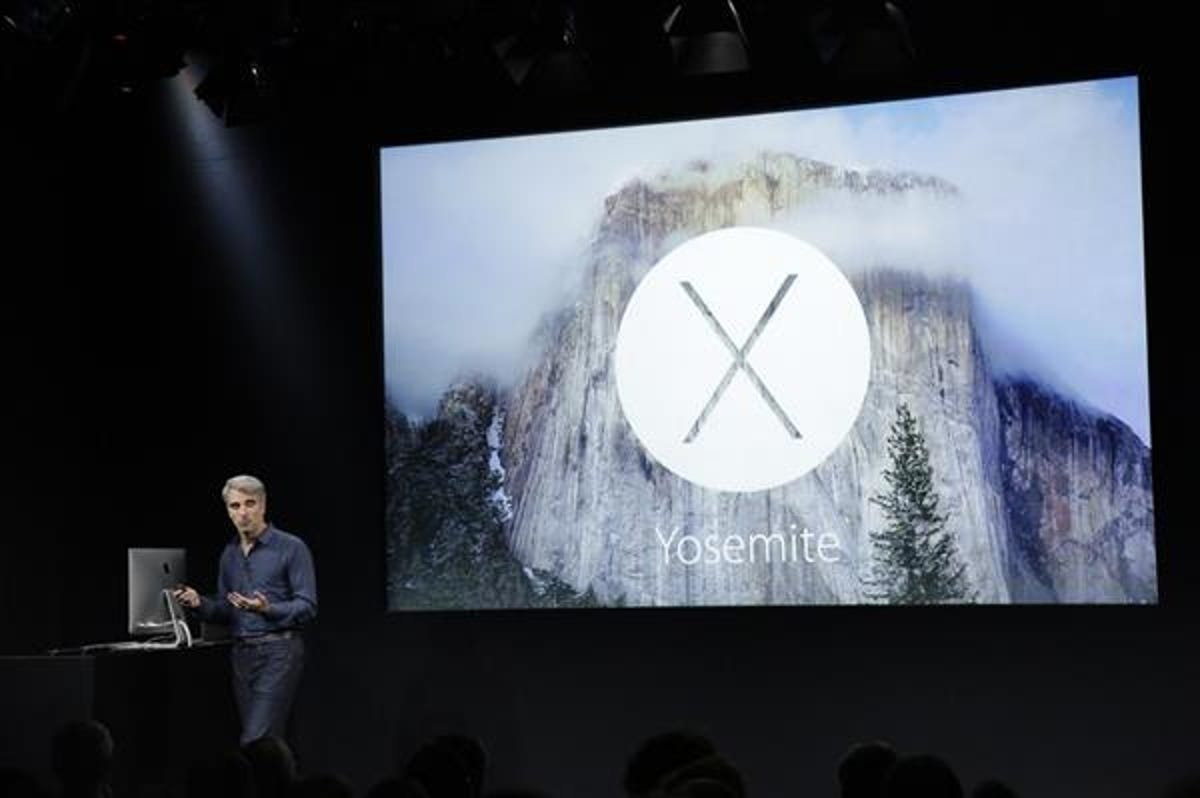
Tim Stevens/CNET
Apple on Thursday will finally start letting people explore Yosemite — its new Macintosh operating system named for the famous national park in Northern California.
The consumer electronics giant made the announcement at a press event at its corporate headquarters in Cupertino, Calif., where the company also unveiled new iPads and Macs.
Apple first unveiled the software, OS X 10.10 Yosemite , in June at its Worldwide Developers Conference in San Francisco. The operating system has a new look, a refined toolbar, new notification-center features, and a dark mode. In addition, Yosemite will now synchronize with Apple’s iOS mobile operating system through AirDrop file sharing, iMessage messaging, and the ability to make and take phone calls.
Craig Federighi, Apple’s senior vice president of software engineering, on Thursday demoed the call feature by ringing up comedian Stephen Colbert, poking fun at the company’s notorious reputation for secrecy.
While Yosemite receives less attention than Apple headliners like the iPhone or iPad, the OS is key to Apple’s efforts to grow in the computing market. Apple now generates less than 15 percent of its total revenue from Macs, but the devices help the company build its ecosystem. And Apple at times has posted strong Mac sales in periods when the rest of the PC market has struggled.
Yosemite gives your Mac a new look and new features (pictures)






After years of giving OS X cat-related names — including Leopard, Lion, Mountain Lion — Apple last year shifted to California-themed titles for future versions of the operating system. The first in that new line was 2013’s OS X 10.9, aka Mavericks, which was named after the world-famous surfing competition held near Half Moon Bay, Calif. Mavericks featured improved battery life, many new applications, better power management, tabs in Finder, and the ability to add tags to file names so they’re more searchable.
The upgrade to Yosemite will be free, a pricing trend for the newest Mac operating systems that the company began with Mavericks. Giving away the new version is a way for Apple to entice users to keep their software up to date — and keep them hooked on Apple services.
With Yosemite, Apple has also made another strategic move: trying to distance itself more from Google. A newly revamped Spotlight feature has expanded search capabilities on Apple’s new Mac OS.
“Spotlight has been supercharged,” said Federighi.
Previously, the tool served primarily as a way to search only through a computer’s hard drive. The feature could also trigger Web searches, but those were done through a user’s default browser. Spotlight on Yosemite will also be able to surface things like movie showtimes, Wikipedia articles, and local listings through Yelp.
Related Stories
- With Spotlight, Apple aims to push Google toward the shadows
- Apple unveils OS X Yosemite
- Mac OS X Yosemite brings new design and Handoff feature for free this fall
The feature does very little compared to what Google or any other search engine can do. And Apple knows it can’t fully leave Google behind — Google searches are still prominently integrated into the company’s new iOS 8 update , and Spotlight on Yosemite offers Google search suggestions, as well as its own Spotlight suggestions.
But the idea is not to replace Google on the Mac. Instead, it’s to catch a user off-guard before he or she even opens up Google in a browser, Jan Dawson, chief analyst at Jackdaw Research, said when Yosemite was introduced.
The move is only the latest example of Apple’s desire to buck Google from its devices. The two tech giants are already archrivals in smartphone and tablet software, as most users flock to either Apple’s iOS or Google’s Android mobile operating systems. Steve Jobs, Apple’s late co-founder, famously said he would wage a “holy war” against Google over Android’s offerings.
In 2012, Apple banished Google’s YouTube app from iOS home screens. Even more extreme, Apple set out to replace Google Maps on its devices with its own home-grown product, only to hear users howl when the app was released with major flaws.
Yosemite’s search functions, though subtler — and focusing more on desktop than mobile — follow the same line of thinking. “[Apple] sees Google as their biggest strategic competitor, and they are trying to extract them as much as possible,” Dawson said at the time.


Now playing:
Watch this:
Yosemite’s new look and defining features
2:45




